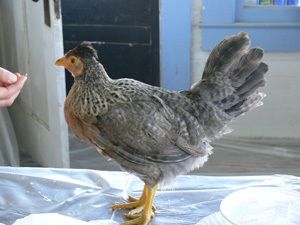Hi Flying,
it sounds like a really interesting approach. Will you be able to maintain the autosexing with the types of crosses that you are planning?
By doing a back cross for a couple generations, it will bring back the autosexing and the cream gene. I might try to get my hands on some dark brown leghorns to use too, just because I don't know how cream affects the mahogany of the dark browns. That is what I love about poultry genetics, if you want a new color or variety, there is always an easy outcross if you know what you're doing



